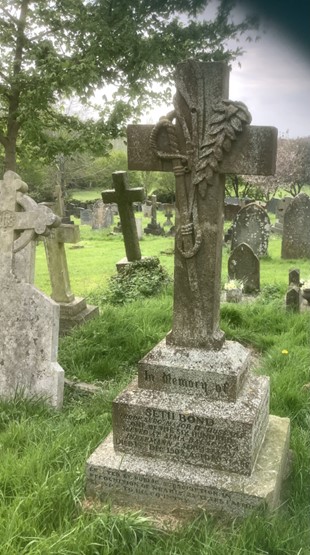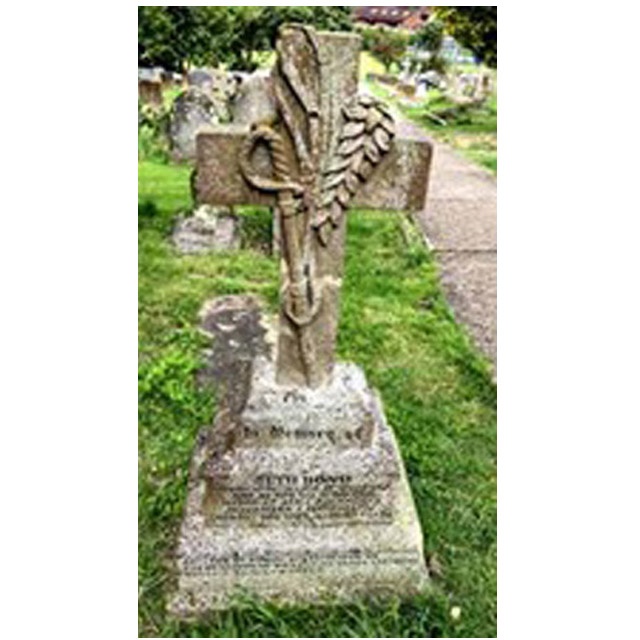“Into the valley of Death, Rode the six hundred” are perhaps two of the most memorable
Although many people remember these lines, few are aware that one of the men who took part in The Charge, and survived, is buried in Southam’s St James Church graveyard. Seth Bond was not born in Southam, but he lived here for most of the second half of his life until his death aged 80 in 1902. He had retired from the Army with 24 years of service and the rank of Troop Sergeant Major. He was one of only 198 survivors out of the 607 taking part in The Charge. In addition, 305 horses were lost. The Charge is remembered as one of the most outstanding acts of battlefield bravery as well as one of the biggest blunders in British military history, resulting from a misunderstood order.
Born in Frant, Sussex, on 13 December 1822, Seth joined the 11th Hussars at Brighton on 20 August 1840. He was already an experienced regular soldier when war broke out with Russia in 1854. Seth sailed from Ireland to the Black Sea port of Varna to join a combined British, French and Turkish force deployed to combat expansion by Tsarist Russia.
Living conditions for Seth and his comrades were appalling, with cholera rife. Out of an estimated 190,0000 Allied deaths in the Crimean War, 130,000 died from disease. However, Seth survived a closer brush with death at the battle of Alma on 15 September 1854, where he was wounded with a bayonet, and won the French War Medal for sparing the life of the captured Russian who had wounded him.
Little more than a month later the 11th Hussars were devastated by their losses in the Charge of the Light Brigade. Of the 110-strong regiment, Seth was one of just 25 survivors, sustaining sabre wounds which were visible for the rest of his life.
Less than two weeks later, on 5 November, Seth was in action again at the battle of Inkerman, where despite overwhelming odds the Allies defeated the Russians and inflicted nearly 12,000 casualties either killed, wounded or captured, and again at Sevastopol. He was awarded the Crimean Campaign medal with four clasps and the Turkish Medal, as well as the French medal already mentioned.
On a date which remains a mystery, Seth married Mary Plummer, whose family lived in Appendix Street, Southam (now Pendicke Street). It is probable that this was before he left the Army in 1864, receiving a military pension of 2 shillings (10p) per day. In the same year he became the licensee of the Harp Inn on the Banbury Road, where the HS2 workings cross it today. However, just two years later he failed to renew the licence, and the Harp closed for several years.
After this false start in adjusting to civilian life, the couple moved to a house in Appendix Street near the junction with Oxford Street. This building has since been demolished and replaced by a detached house. Although he remained at the house in Appendix Street for the rest of his days, Seth Bond took up farming to provide an income and is mentioned in several legal disputes over charges for services. In 1876 he successfully defended a lawsuit brought against him by John Aires of Southam in a dispute over Seth’s hayrick, and in the same year he sued a Mr Hough for £4 spent on feeding his colt, but was awarded only £3.
Seth Bond took part in many commemorations of the Battle of Balaclava including dinners in London, and his photograph attending one such event was published in the Illustrated London News. He is also believed to have been part of Queen Victoria’s escort on several occasions whilst still serving in the Army, with a number of references describing him as “… a man of unusually fine physique …
In later life Seth and Mary appear to have experienced some financial difficulty, for after he died his nephew was obliged to write to Mr T H Roberts, the organiser of several Crimean War reunions, requesting help with funeral costs. The resulting postal order for £3:6s paid for a funeral attended by many hundreds of people with full military honours, including an 18-gun salute fired over the grave and the sounding of the “Last Post”.
The photo included with this article shows the striking and unusual Seth Bond gravestone which is located very near to the War Memorial. It records that he fought at the battles of Alma, Balaclava, Inkerman and Sevastopol, that he died aged 80 on 15 December 1902, and that the stone was erected by public subscription in recognition of ‘nearly 25 yrs faithful service to his country.’ His widow Mary was also buried there following her death on 24 August 1911.
Sadly about 6 inches of the cross had to be removed during the July 2024 renovation as it had crumbled away. The gravestone was originally 5 feet in height. The recent renovations were initiated by Southam Civic Ideas Forum and Davies-Astills Monumental Masons carried out the repairs.
It is impossible in such a short account to do justice to the life story of this remarkable man. Richard Stirling’s Seth Bond – A Warwickshire Hero at the Charge of the Light Brigade (Hamilton Publishing, 1994) provides much more detail, and is one of the sources for this article.


Thank you for this article. I am always learning about him. He is a relative of mine; my dad tells me tales of his dad sitting on Seth Bond’s knees while reading stories to him and him asking Seth Bond about the many cut sabre scars on his arms. We have Seth Bonds medals, original hand painted portrait of him in his uniform and lots of other memorabilia on my dad’s front room wall. .
Thanks for your feedback Debbie, do you live anywhere near Southam? If you do I’d be interested in meeting up with you. When we do a town walk or talk on the history of the town we always mention Seth Bond as one of our most famous residents and his grave is in the Churchyard just a few yards away from our museum. Virtually every one has heard of the Charge of the Light Brigade. If you’d like to contact me less publicly you can email me at southamheritage@hotmail.com Many thanks for the feedback, Regards Bernard